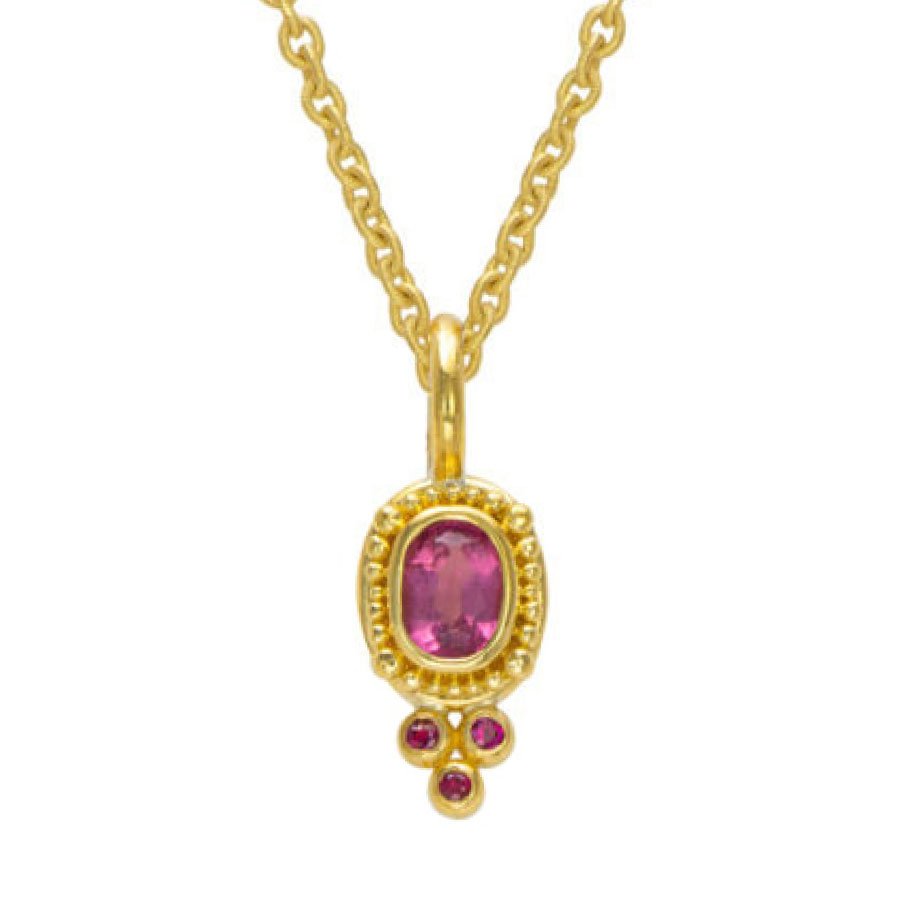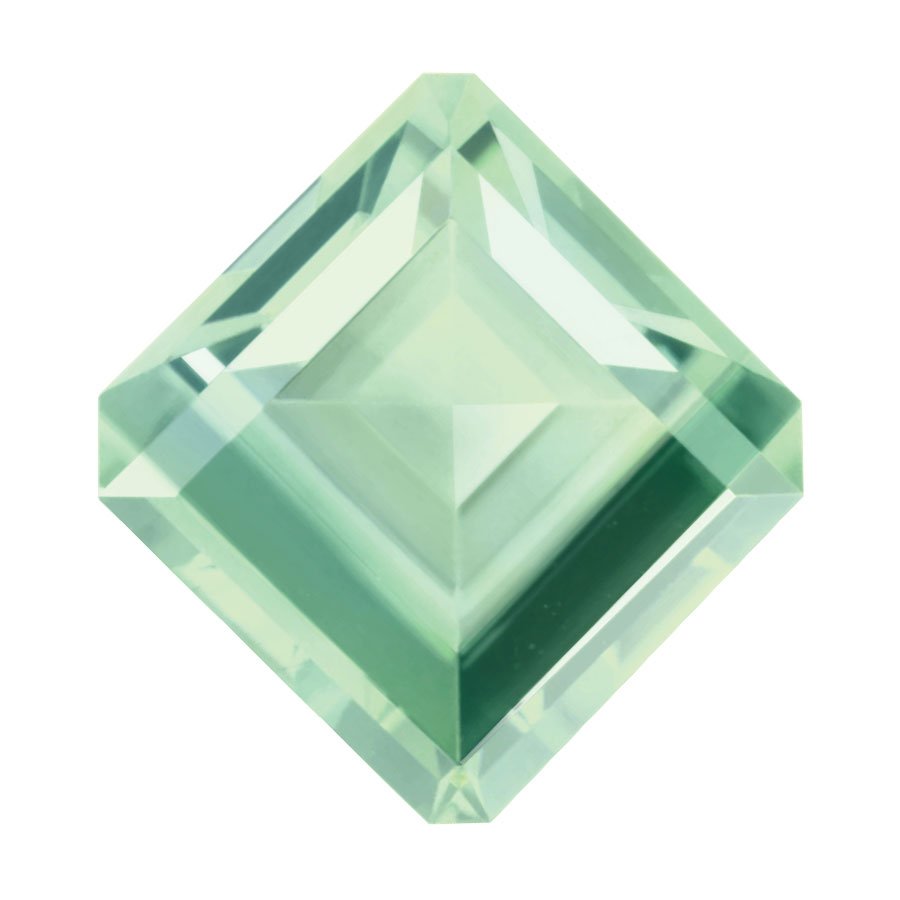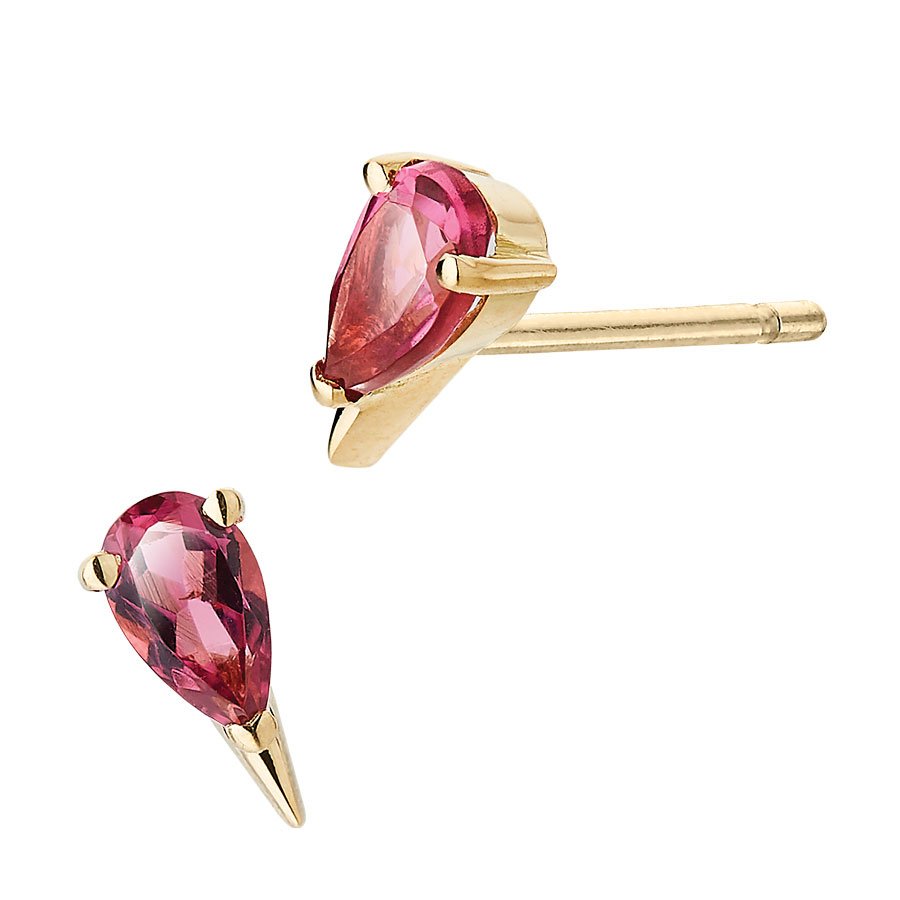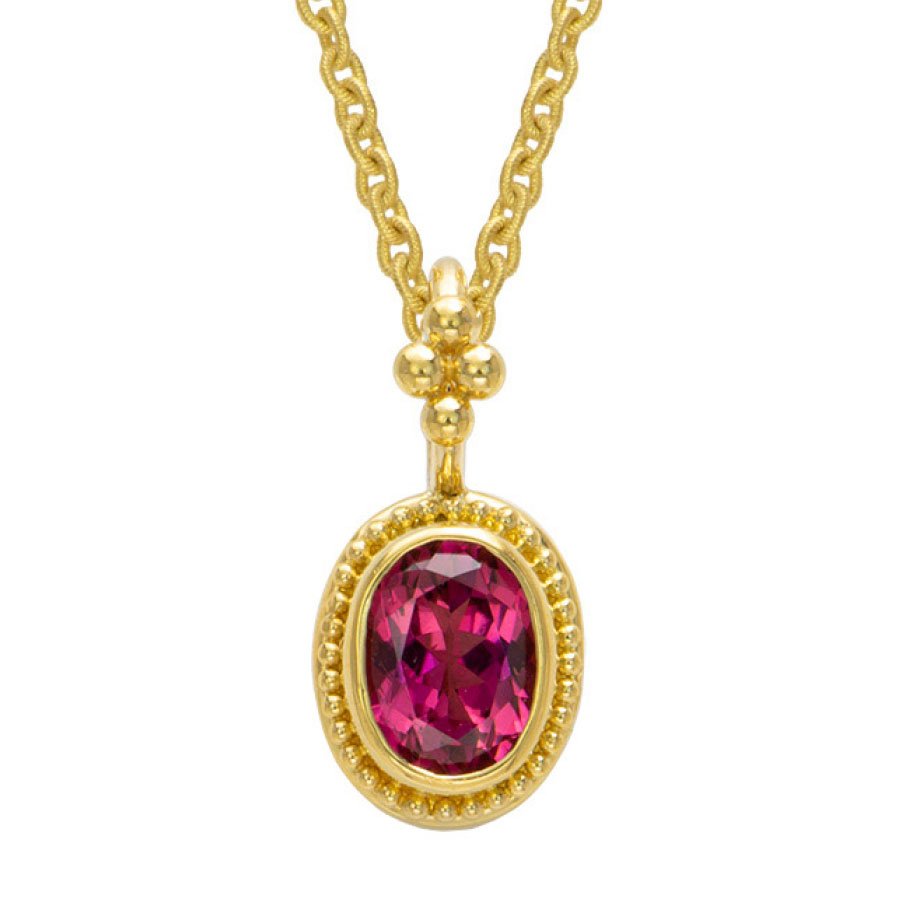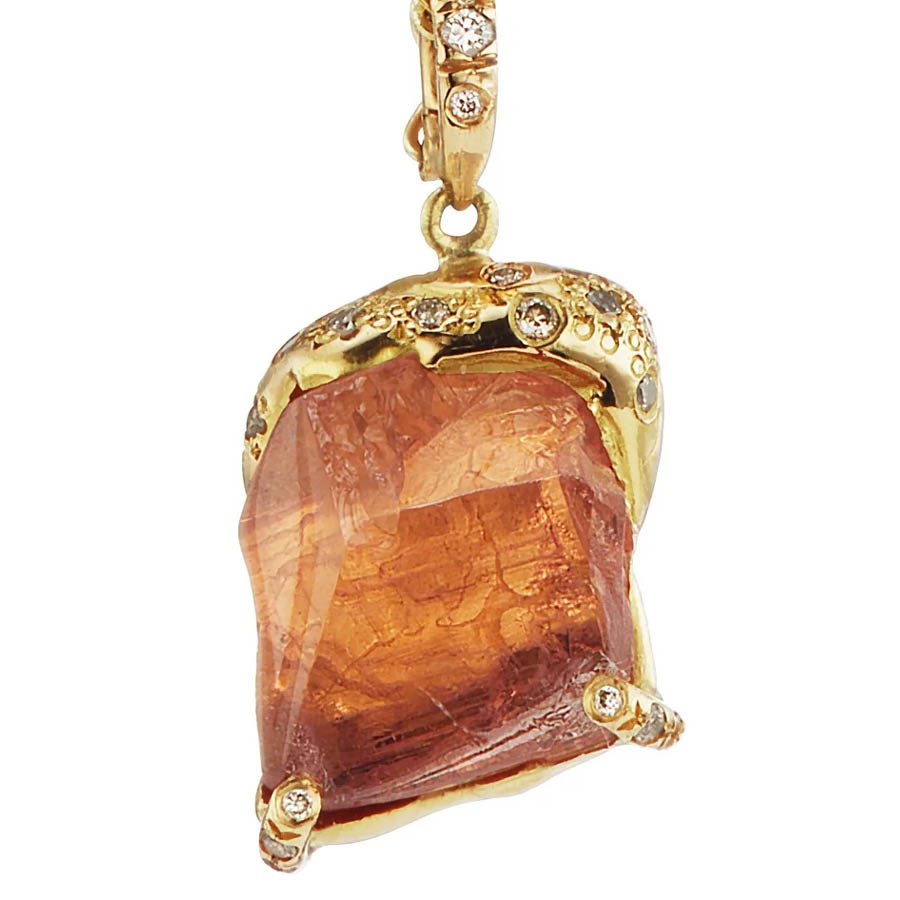TOURMALINE JEWELRY WITH INTENTION AND CONNECTION
What is special about TOURMALINE JEWELRY?
The rich color possibilities! Tourmaline can be a vast array of juicy hues, from the electric blue of Paraiba to ruby red rubellite to emerald green chrome.
All tourmalines are pleochroic, meaning the color changes when viewed from different angles.
Get the skinny on tourmaline and shop a curation of intentional jewelry, thoughtfully designed by women…

SHOP
DESIGNER TOURMALINE JEWELRY
Manifesting your intentions with tourmaline
This gemstone attracts inspiration, confidence, compassion, tolerance, and prosperity.
Just as our ancient ancestors believed gemstones were imbued with special properties, such as protection, wisdom, or courage, today we are empowered by the metaphysical properties of gemstones to manifest what we wish to create.
You may be interested in our guide to visualize your intentions through the metaphysical properties of gemstones and jewelry
WHAT IS TOURMALINE?
The name “Tourmaline” comes from “toramalli” the Sinhalese (Sri Lankan) word meaning “mixed colored stones”. Ancient Egyptians believed their colors were derived from passing over a rainbow.
It was brought to Europe 400 years ago by traders from the Dutch East India Company. Some of these gemstones were thought to be rubies or emeralds, due to their strong resemblance. It wasn’t until the 1800’s that scientists realized it was a distinctly different mineral species!
These gemstones have magnetism - literally! Because they often have high iron and/or manganese concentrations, they are the most magnetic of all natural transparent gemstones. No wonder I’m so drawn to them!
Scientifically, it can be electrically charged when mechanical pressure is applied - a phenomenon called piezoelectricity. It is also pyroelectric, meaning it can generate a temporary voltage when heated or cooled. When heated, it will magnetically attract small particles such as dust or ashes. It is called “the electric stone” for these qualities!
We’ve outlined points to help you understand value and what to ask about tourmaline jewelry.
Seeking personalized shopping support when investing in your jewelry collection?
Get expert guidance for jewelry with intention and connection!
What to know about tourmaline - and discerning jewelry designed by WOMEN!
What are the colors of tourmaline?
These gemstones have a wonderful distinction of exhibiting a vast variety of colors - one of the most in the entire gem kingdom! The colors are determined by trace elements of other minerals. Color and rarity play a significant role in dictating market value.
All tourmalines are pleochroic, which is an optical phenomenon. This means it has different colors when observed at different angles. Depending on how the gemstone is cut, it can be subtle or more pronounced.
Additionally, they can be bi-colored or multicolored. Some can even exhibit chatoyancy, the cat’s-eye effect.
It is also unique for being the only common mineral that is three-sided! They occur as long, thin, straight crystals.
What are the rarest gemstone colors?
Rare tourmalines exhibit an array of colors including neon-blue Paraíba, purple, raspberry-red rubellite, and emerald-green chrome tourmaline - and command higher prices. The most common color is black tourmaline.
Below are five different “species”:
SCHORL - most common accounting 95% of the naturally occurring mineral with brownish-black to black hues.
DRAVITE - named for the Drave district of the Austrian Alps - dark yellow to brownish-black.
UVITE - on the rare side, named from the Uva Province in Sri Lanka. It lacks the diverse hues of other species but can be light to dark green, a range of yellows, browns, reds, blacks, and colorless.
LIDDICOATITE - originally discovered in Madagascar and named for Richard Liddicoat, who served as Chairman of the Board of Governors of the GIA and introduced the diamond grading system we know today. It can be smoky brown, pink, red, green, blue, or rarely white with generous color zoning running parallel to pyramid faces.
ELBAITE - named for the island of Elba in Italy. This species includes a wide array of color. Below are a few elbaite varieties:
Indicolite - blue is the rarest color of tourmaline and can be light blue to bluish green to indigo.
Paraiba - the most rare and valuable material was discovered in the 1980's at the Mina da Batalha mine in the Paraíba State of northern Brazil. It is famed for its unbelievable neon hues ranging from aqua greens to aqua blues - the most valuable color resembles Windex!
Rubellite - an array of shades ranging from light pink to ruby red hues with slight shifts towards orange, brown, or purple hints.
Watermelon - A multicolored crystal with one end being green to clear to pink at the other, or radiating from the circumference from green to clear to pink within.
Chrome - an intensely rich green hue.
SEEKING TOURMALINE JEWELRY TO FEEL CONFIDENT, SEEN, AND POWERFUL?
As your fine jewelry guide, I help you find signature pieces that elevate your style and connect you with your inner power. Shop our hand-picked selection of coveted jewelry or engage our concierge services to invest in your future heirlooms.
Where is tourmaline found?
Tourmalines can be found in pockets from the Americas, Africa, Russia to parts of Central to South East Asia. The most prolific mines are in Brazil and Africa.
The origin of gemstones: TRACEABILITY
The breathtaking gems you see here are courtesy of Nomad’s. Just as we know where our food comes from and who made our clothes, why not jewelry?
Below is an example of their proprietary Provenance Report, demonstrating their commitment to transparency, trust, and traceability. Beyond the descriptive details about each gemstone, the report discloses the history of the origin and a specific gemstone’s journey to the cutting wheel - literally mapping and disclosing the supply chain.
A sample report outlining details of a single Nomad’s gemstone, as well as the history of origin and traceability story.
What does ethically and sustainably sourced jewelry mean?
Women and men at the forefront of this global conversation will have slightly different perspectives, but there is a shared ethos: responsible sourcing.
This encompasses traceability, conflict-free, protecting people, their skills, and the environment.
INTERESTED IN PERSONALIZED SHOPPING SUPPORT?
Our jewelry concierge and styling experience can assist with:
editing and reconnecting you with the jewelry you already have
advising you on your jewelry wardrobe needs to elevate your personal brand
guiding your investment in jewelry that aligns with your values
purchasing jewelry gifts that will be loved and worn with joy
responsibly sourced tourmaline gemstones for bespoke jewelry
Ready for intentional jewelry that brings what’s inside out? Let’s Connect!
For some gemstones, treating the material to enhance its appearance is a common, acceptable practice. Tourmalines are among this group.
A few such treatments are heat treatment (can lighten darker material), irradiation, bleaching, and fracture/cavity filling - and these should always be disclosed.
On the topic of treatment of any kind with any gemstone, knowledge is power because it always impacts value.
The MOHS SCALE: How hard is TOURMALINE?
harder than quartz, so great for everyday rings
The Mohs scale of hardness is important to consider when choosing a particular stone for a particular kind of wear.
It is the degree of mineral “hardness”, measured by the resistance which a smooth surface offers to abrasion: 1 (soft) to 10 (hard). For example, an 8 will scratch a gemstone that is a 7 or below. Simply put, the softer the stone, the more careful you need to be about wearing that stone in jewelry that may be exposed to more wear.
Does tourmaline scratch easily?
This is a question you’re most likely to ask when buying gemstones and jewelry. Knowing how hard it is (or any other stone) will help you to determine whether it is an everyday gemstone or an occasional piece.
Tourmalines are slightly harder than quartz at 7 - 7.5. This means it is a gorgeous candidate for everyday rings, versus softer gemstones that can be more susceptible to everyday scratches and damage with accidental bumps.
Note that tourmalines with a lot of inclusions, especially if they are valuable varieties such as Paraiba, are more fragile and are therefore better options as cocktail rings or other kinds of jewelry that will have less contact with hard surfaces.
How to care for tourmaline jewelry
A few jewelry care basics can keep your pieces looking their best, avoid damage and loss of gemstones.
WEAR: When dressing for day or night, jewelry should be the last thing on and the first thing off. Contact with chemicals such as fragrance, hairspray, nail polish remover, household cleaners, and chlorine can harm jewelry.
Remove jewelry when cleaning, gardening, swimming, or playing sports, as contact with hard surfaces can scratch, damage, or loosen stones in prongs.
CHECK SETTINGS AND STONES: Inspect jewelry before wearing it to check if the stones are chipped, loose, or rattle in settings.
CLEANING: All precious metals, gemstones, and pearls should be cleaned regularly, but require different care. For example, ultrasonic cleaners can crack opals, shatter pearls or diminish their appearance. Avoid using steam and ultrasonic cleaners with tourmaline.
● For gemstones on the Mohs scale at 7 or above, a simple cleaning solution is warm water with mild soap and a soft toothbrush. For those at 6 or below, replace the toothbrush with a tightly woven microfiber or other soft cloth.
● A soft polishing cloth will keep any precious metal looking its best.
● Take any investment pieces to a trustworthy professional jeweler once a year for a thorough cleaning and inspection.
● See our full guide to How To Clean Fine Jewelry.
STORAGE: Keep jewelry individually stored in a pouch or box to avoid scratches and abrasions from other gemstones and metal, as well as general tangles and dents.
INSURANCE: For any jewelry of significant value, be sure to have it appraised, file any provenance and gemstone report in a secure place, and be sure to have it insured.
JOIN OUR COMMUNITY OF WOMEN LEADERS
Sign up: Step into our inner circle for style tips to amplify your visibility, inspiring conversations with women leaders, and insider access to jewelry that celebrates your story and inner power.


